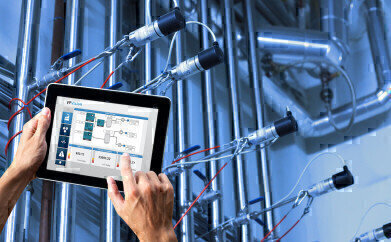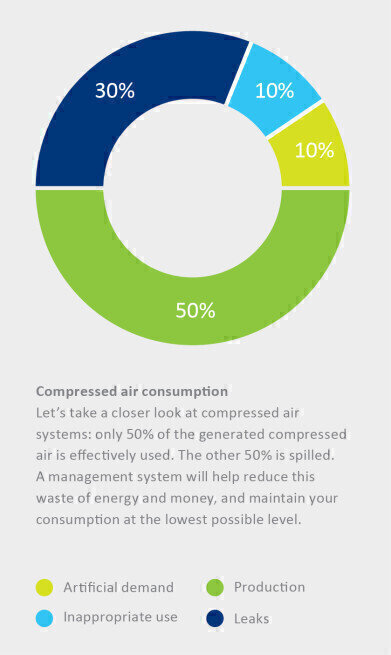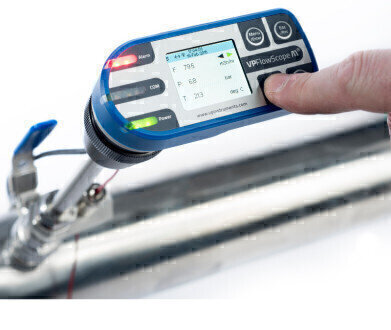Environmental Laboratory
10 Tips to save compressed air
Jan 15 2020
10 to 30% of the electrical bill of an average industrial company is taken up by compressed air. Furthermore, only 50% is used for production, as shown by studies. So, investing in compressed air savings, pays back easily! Here are 10 tips how to reduce your consumption. In the mean-time, if you want to learn more about the huge compressed air savings potential, click here.
1. Shut off sections and machines that you do not use
A simple manual or motorised valve can save you thousands of euros/dollars. Make sure that air is not lost through leaks or machines standing in idle mode. Flow meters help to determine to which sections air is flowing.
2. Breathe cool, fresh and clean air
A compressor converts 90% of its power into heat. The compressor room heats up, while a compressor uses less energy to compress cold air. 3°C cooler air, already results in 1% energy savings.
3. Invest in an efficient control system
Have insight in your compressed air usage profile, so you can optimise your compressor control system. Ask an air audit specialist to perform an air audit and make an improvement plan based upon the results.
4. Think about the required air quality
Clean compressed air is important for the life span of your compressed air installation. Choose the right quality carefully for specific processes whenever possible, as higher air quality results in higher energy costs.
5. Reduce offload hours
Electricity consumption of a compressor in offload stage, costs 10-35% of the consumption during load hours. At >80% use of the capacity, the offload-load control is considered efficient.
Choose the right control system.
6. Manage your leakage
In general, there is 20-40% of leakage in a compressed air installation. An energy management system like VPVision, can be used as a global leakage management system and helps you to rank the leaks on savings potential. Learn here about the benefits of compressed air monitoring. Furthermore, invest in an ultrasound leak detector to find the leaks.
7. Balance your system
Is your compressor oversized? In some applications the compressor is bigger than necessary, for instance after changes in the production process. The payback time of the investment in a smaller compressor is often short.
8. Reduce the pressure
Every bar pressure reduction gives an instant win of 7% on your energy consumption. Invest in pressure regulators per production area, use buffer vessels and reduce pressure swings in your network.
9. Think of alternative uses
Compressed air is 8 times more expensive than electric power. However compressed air is often used, simply because it is present. The VPFlowScope flow meter measure mass flow and pressure simultaneously, offering insight in your usage. This helps you selecting the right solution.
10. Choose the right pipe size and material
A proper pipe system is crucial to limit your pressure drop. Iron pipes tend to rust. Too small piping creates pressure loss. Use angular feed-ins on the main header to reduce pressure loss.
Digital Edition
IET 34.2 March 2024
April 2024
Gas Detection - Biogas batch fermentation system for laboratory use with automatic gas analysis in real time Water/Wastewater - Upcycling sensors for sustainable nature management - Prist...
View all digital editions
Events
Apr 22 2024 Hannover, Germany
Apr 22 2024 Marrakech, Morroco
Apr 23 2024 Kuala Lumpur, Malaysia
Apr 23 2024 Kintex, South Korea
Apr 23 2024 Edmonton, AB, Canada




















